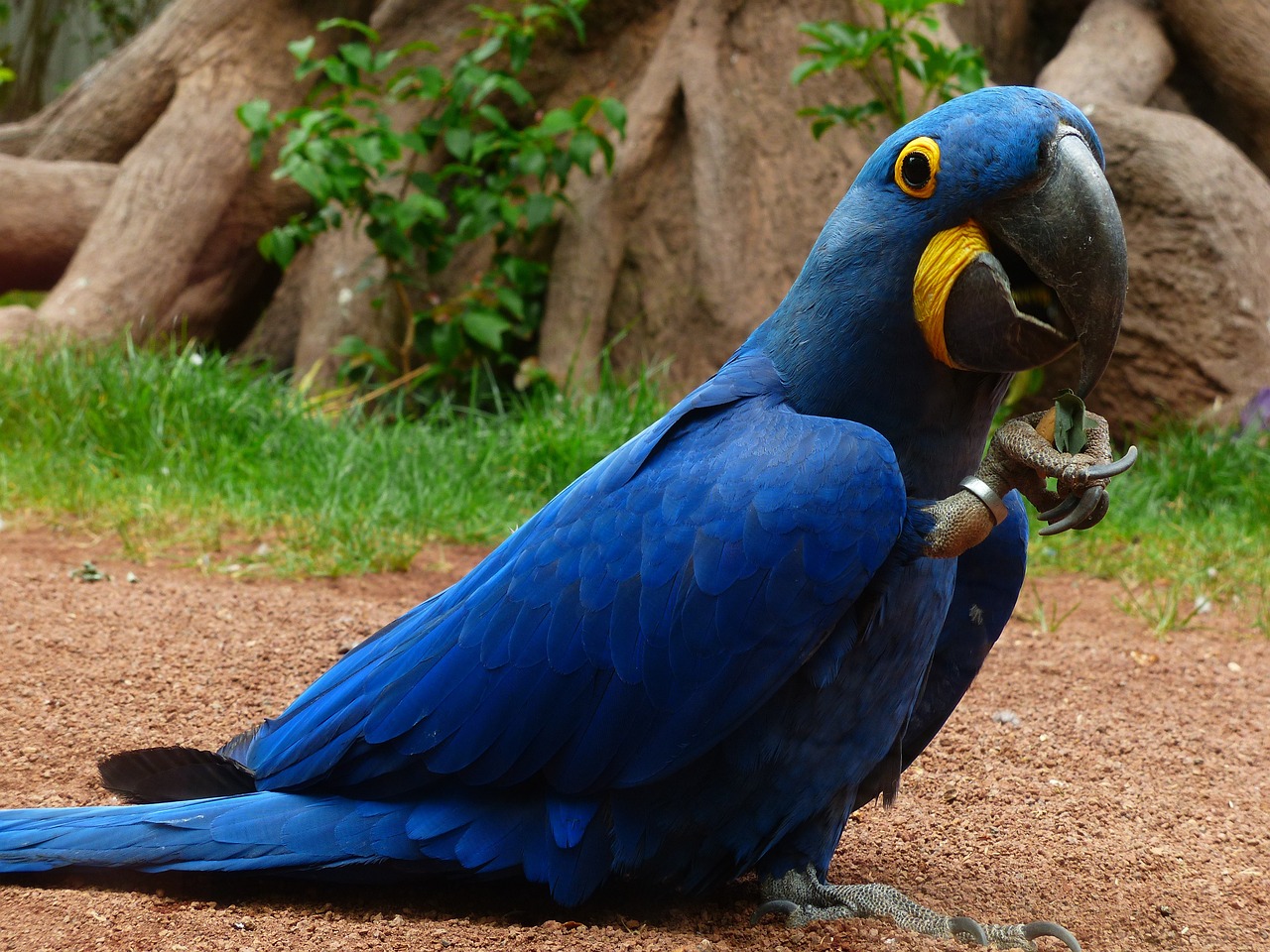The Hyacinth Macaw, scientifically known as Anodorhynchus hyacinthinus, is a species of parrot native to central and eastern South America. It is easy to recognise because of its vibrant cobalt-blue plumage.

This bird is primarily found in the Pantanal region of Brazil, as well as in parts of Bolivia and Paraguay. Its habitat consists of dense, riparian forests and palm groves, where it thrives on a diet that includes nuts, seeds, and fruits. It specially likes the nuts of the Hura crepitant tree.
The Hyacinth Macaw plays an important role in the ecosystem by dispersing seeds and contributing to the regeneration of the forests it inhabits.

One of the distinctive features of the Hyacinth Macaw is its size – it has a wingspan reaching up to 4 feet (120 cm) and measuring about 120cm from head to tail. Despite its large size, the Hyacinth Macaw is known for its agility and grace in flight.
Its powerful beak is adapted for cracking hard nuts and seeds found in the forests.
Hyacinth Macaws are known for their intelligence and social behaviour. These parrots form strong bonds with their mates and are often seen flying in pairs or small family groups. They also have the ability to mimic human speech and sounds.

There are only 7000 of them left in the world. They are listed as “vulnerable” in the IUCN list.
All images: Pixabay. Featured Image: The hyacinth macaw using its claw as a ‘hand’.

